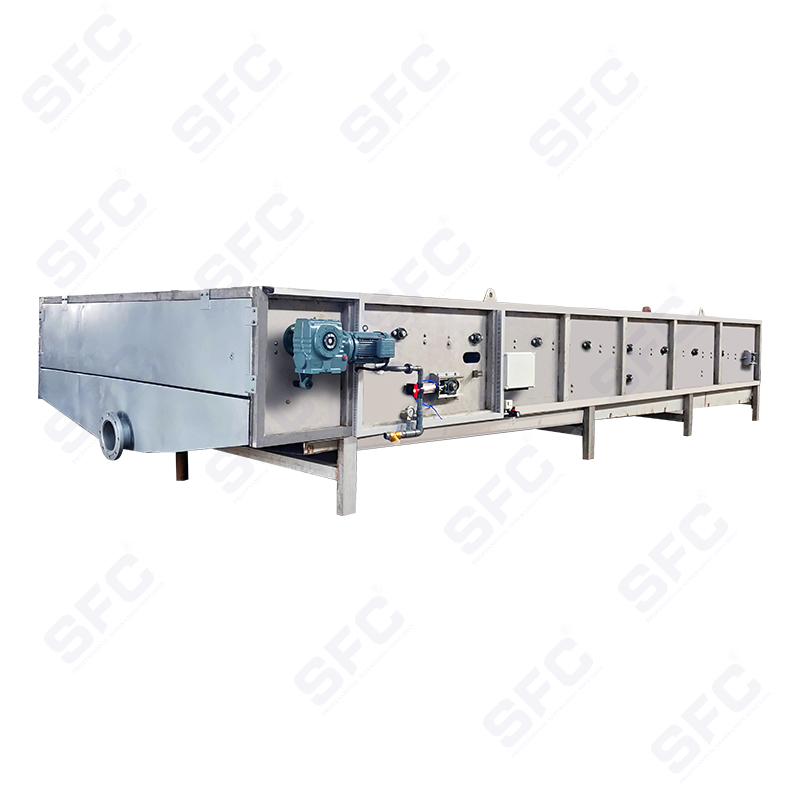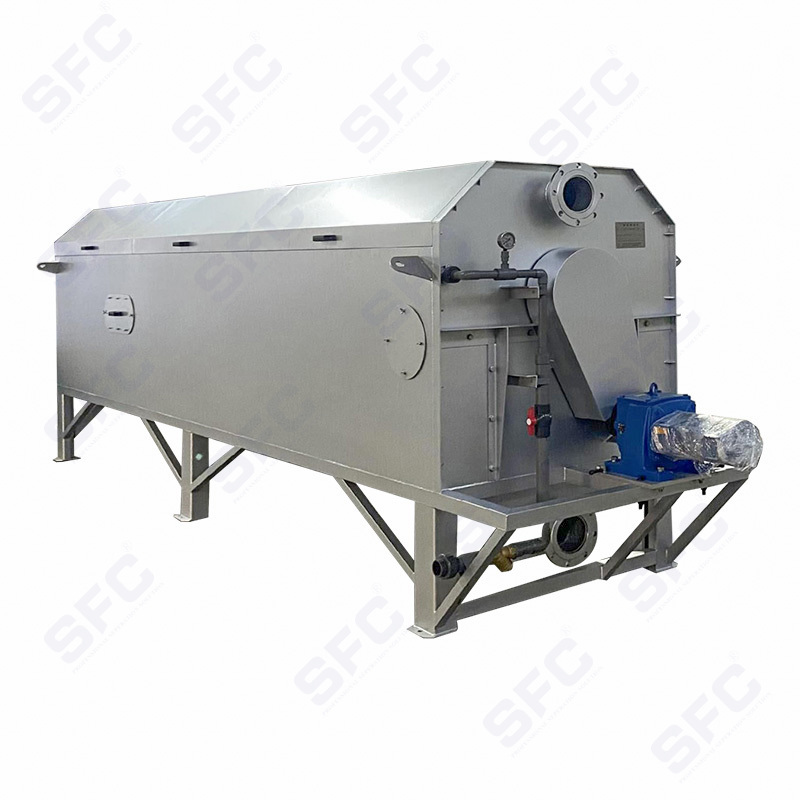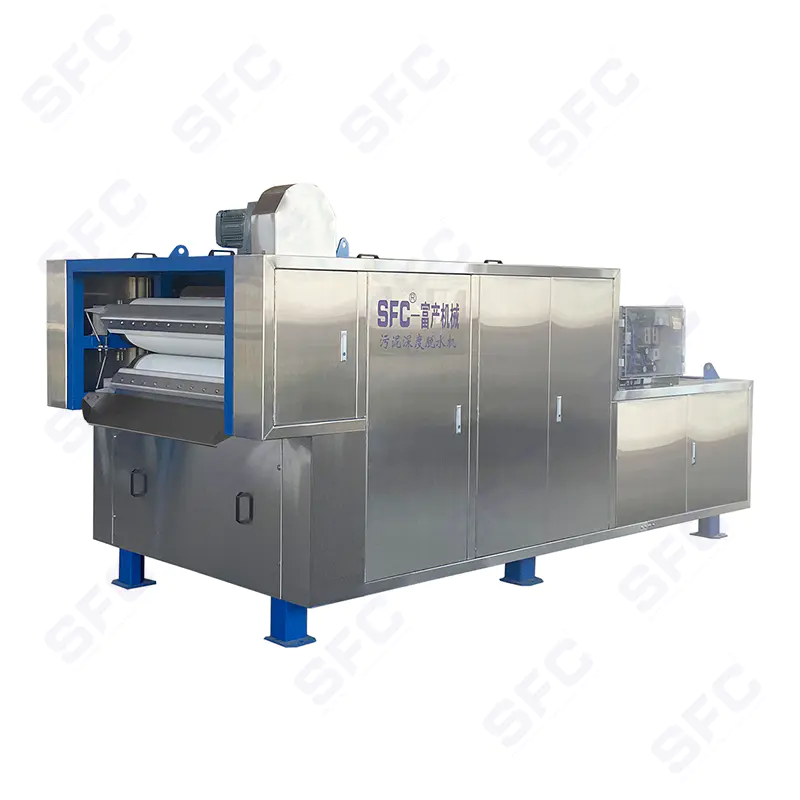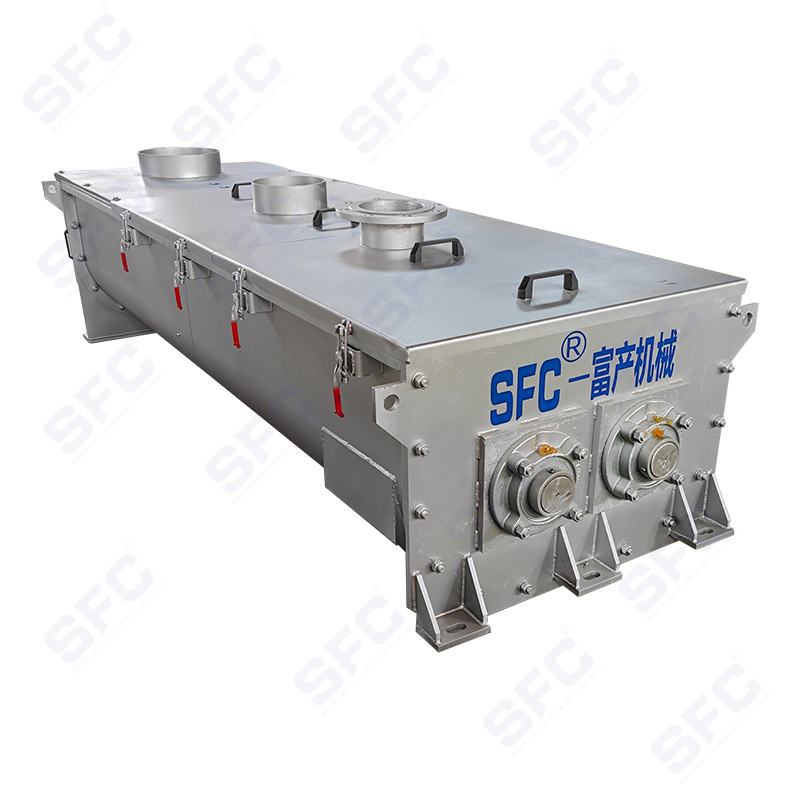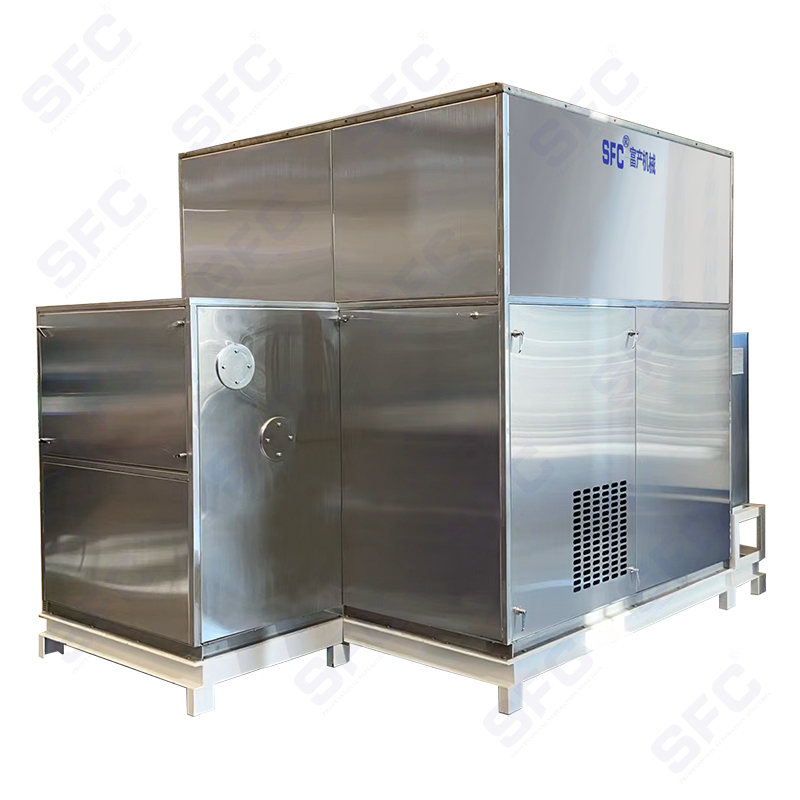How to Maintain and Troubleshoot Wet Sludge Conveying Equipment for Long-Term Performance
Wet sludge conveying equipment plays a critical role in wastewater treatment plants, industrial facilities, and municipal sludge management systems. These machines handle one of the most challenging materials—wet sludge, which is often heavy, sticky, abrasive, and highly variable in composition. Because of these unique characteristics, proper maintenance and troubleshooting are essential to ensure long-term performance, minimize downtime, and optimize operating costs.
1. Understanding Wet Sludge Conveying Equipment
Before discussing maintenance, it is important to understand what wet sludge conveying equipment includes. Depending on the facility, sludge can be transported using:
Screw conveyors – effective for semi-solid sludge with high viscosity.
Pumps (progressive cavity, centrifugal, or piston) – ideal for moving fluid-like sludge.
Belt conveyors – used in plants where sludge needs to be transferred in large volumes over longer distances.
Hydraulic conveying systems – suitable for large-scale operations where sludge is mixed with water for easier pumping.
Each type has unique mechanical and operational requirements, but they share common challenges related to wear, clogging, and handling corrosive or abrasive sludge.
2. Importance of Maintenance in Wet Sludge Conveying
Regular maintenance of sludge conveying systems provides multiple benefits:
Extended Equipment Lifespan – Preventing excessive wear or damage ensures years of reliable service.
Operational Efficiency – Well-maintained systems reduce energy consumption and operate at optimal capacity.
Reduced Downtime – Preventive maintenance minimizes unexpected breakdowns.
Lower Costs – Investing in regular upkeep prevents expensive emergency repairs or premature equipment replacement.
Compliance and Safety – Ensuring the system runs smoothly helps meet environmental regulations and workplace safety standards.

3. Routine Maintenance Practices
a. Inspection and Monitoring
Regular visual and operational inspections are the cornerstone of maintenance. Operators should check:
Lubrication levels in bearings and gearboxes.
The condition of belts, screws, and pump components.
Signs of leaks, unusual noises, or vibration.
Sludge buildup or blockages in pipelines and conveyors.
Implementing condition-monitoring technologies such as vibration sensors, pressure gauges, or thermal imaging cameras can help detect issues before they become critical.
b. Cleaning and Flushing
Wet sludge is prone to sticking and settling in equipment. Periodic cleaning prevents blockages and corrosion.
Pumps may require flushing with clean water after operation.
Screw conveyors may need regular scraping or washing to remove accumulated sludge.
Pipelines should be back-flushed or pigged to avoid clogging.
c. Lubrication
Proper lubrication of moving parts reduces wear and overheating. Use grease and lubricants that are resistant to moisture and chemical exposure, as wet sludge often contains corrosive compounds.
d. Component Replacement
Parts subject to wear—such as screw flights, pump stators, bearings, and seals—should be monitored closely. Timely replacement prevents small issues from escalating into major failures.
e. Calibration and Alignment
Ensuring proper alignment of mechanical parts (belts, screws, shafts) prevents vibration, uneven wear, and breakdown. Equipment should also be recalibrated periodically to maintain efficiency.
4. Common Problems in Wet Sludge Conveying Equipment
Despite proper maintenance, some common issues still occur due to the challenging nature of sludge handling:
Clogging and Blockages – Sludge with high solids content can clog pumps and pipelines.
Excessive Wear – Abrasive particles in sludge can erode screws, pump components, and pipe surfaces.
Corrosion – High moisture and chemical contaminants accelerate corrosion of metallic parts.
Seal and Bearing Failure – Continuous exposure to sludge and moisture can degrade seals and bearings.
Energy Inefficiency – Poorly maintained equipment requires more energy to operate.
Noise and Vibration – Misalignment, imbalance, or worn parts can cause mechanical instability.
5. Troubleshooting Strategies
a. Addressing Blockages
For pumps: Reduce sludge concentration, flush pipelines, or install grinders to break down solids.
For conveyors: Check for buildup, remove obstructions, and consider coating surfaces with anti-stick materials.
b. Resolving Wear Issues
Use wear-resistant alloys, stainless steel, or ceramic linings in high-abrasion areas.
Rotate or replace screw flights, stators, and liners periodically.
Apply protective coatings for additional resistance.
c. Managing Corrosion
Use corrosion-resistant materials such as stainless steel, Hastelloy, or coated metals.
Ensure regular cleaning to prevent chemical accumulation.
Apply protective paints or epoxy coatings where applicable.
d. Fixing Seal and Bearing Failures
Regularly lubricate and check seals for integrity.
Replace seals at the first sign of leakage.
Ensure that bearings are shielded against sludge ingress.
e. Reducing Noise and Vibration
Re-align mechanical parts.
Replace worn bearings or shafts.
Install vibration dampers or isolation mounts.
f. Improving Energy Efficiency
Optimize sludge feed rate to match equipment capacity.
Ensure pumps and conveyors are not overloaded.
Upgrade to energy-efficient motors or variable frequency drives (VFDs).
6. Preventive and Predictive Maintenance
Preventive Maintenance
This involves scheduled activities regardless of equipment condition. Examples include monthly lubrication, quarterly inspections, or annual overhauls.
Predictive Maintenance
This approach uses monitoring tools to predict failures before they occur. Technologies include:
Vibration analysis for detecting bearing wear.
Ultrasonic testing to identify leaks.
Infrared thermography for monitoring motor and gearbox overheating.
Combining both methods ensures comprehensive equipment protection and optimized performance.
7. Training and Safety Considerations
Operators and maintenance personnel should receive proper training in equipment operation, maintenance routines, and safety protocols. Key considerations include:
Lockout/tagout procedures before servicing.
Proper use of personal protective equipment (PPE).
Awareness of confined space hazards in sludge handling areas.
Safe handling of cleaning agents and lubricants.
8. Conclusion
Maintaining and troubleshooting wet sludge conveying equipment is not just a technical necessity—it is vital for ensuring smooth plant operation, reducing costs, and protecting the environment. By implementing regular inspections, lubrication, cleaning, and timely component replacement, operators can extend equipment life and minimize unplanned downtime.
When problems arise, targeted troubleshooting—whether for blockages, corrosion, wear, or inefficiency—ensures rapid resolution and restored performance. Ultimately, investing in both preventive and predictive maintenance strategies, along with proper operator training, guarantees long-term reliability of wet sludge conveying equipment and supports sustainable wastewater management operations.



 English
English Español
Español
